
Agent-Based Modelling for Smarter Cities
Dr Nick Malleson
School of Geography, University of Leeds
http://nickmalleson.co.uk/
http://www.geog.leeds.ac.uk/people/n.malleson
Slides: http://mass.leeds.ac.uk/html/slides/Lipari2014/

First: About me
Education
BSc: Computer Science
MSc: GeoInformatics
PhD: (Computational) Human Geography
Note: 'computational' bit is important!
Now: Lecturer in Geographical Information Systems
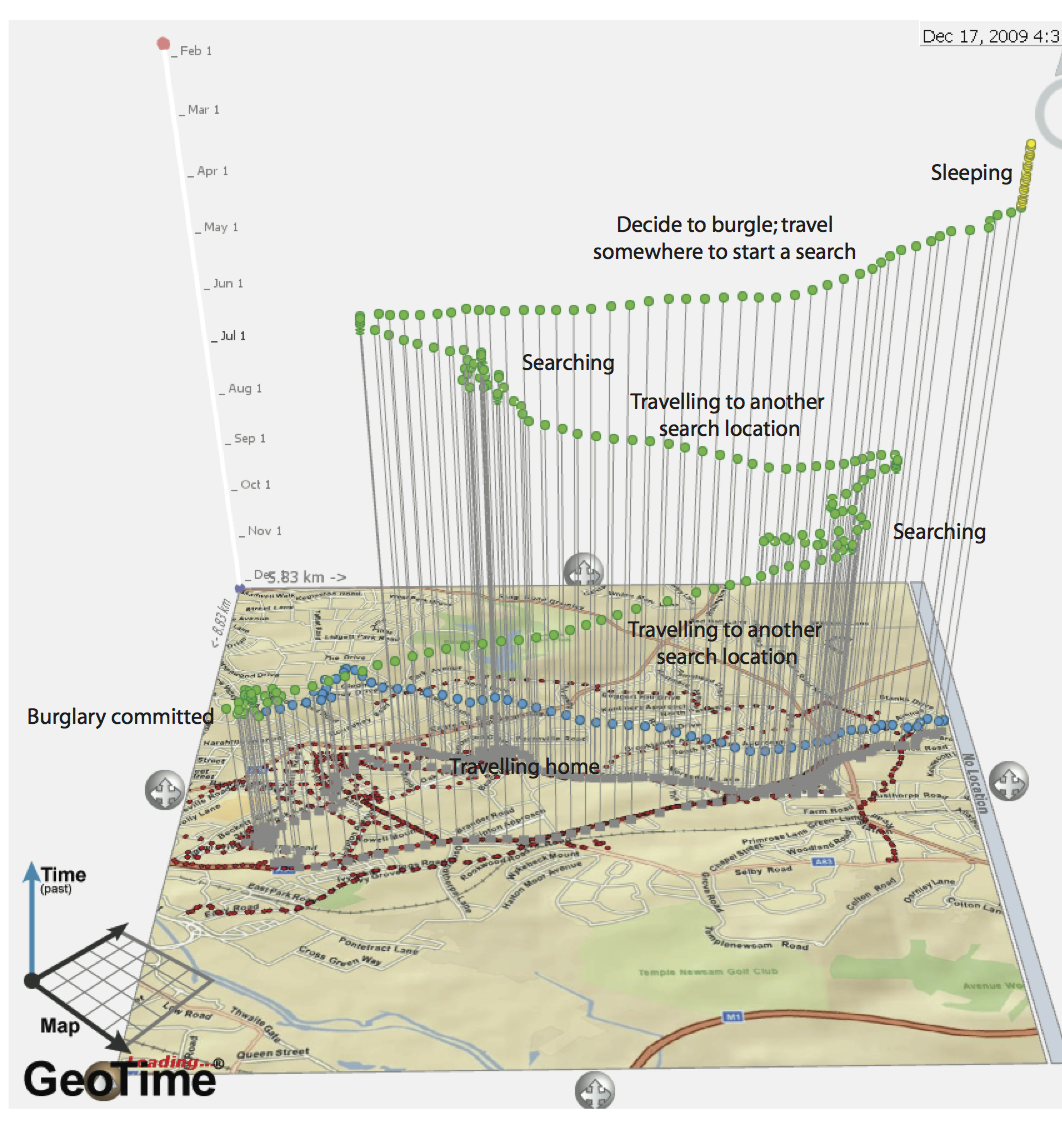
Research Interests:
Spatial analysis and simulation
Crime patterns
Agent-Based Modelling
Big data (particularly for social simulation)
Agent-Based Modelling for Smarter Cities
Session 1 - Modelling Society
Complex Cities
Social Simulation and Agent-Based Modelling
Modelling (Human) Behaviour
Session 2 - The Big Data Revolution
The Abundance of Data
The Big Data "Revolution"
Urban Dynamics and Social Media
Improving our Models of Human Behaviour
Agent-Based Modelling for Smarter Cities
Main aims / outcomes
Enthusiasm for agent-based modelling and its use in smart cities
Some appreciation for the benefits and drawbacks
The potential to use the technique in your research (or at least how to learn more)
This is a very coarse introduction!!
My undergraduate course consists of 20 hours of lectures and 10 hours of pratical classes
See the Introduction to CSS book - chapter 10
Outline: Modelling Society
Background: Complex Systems
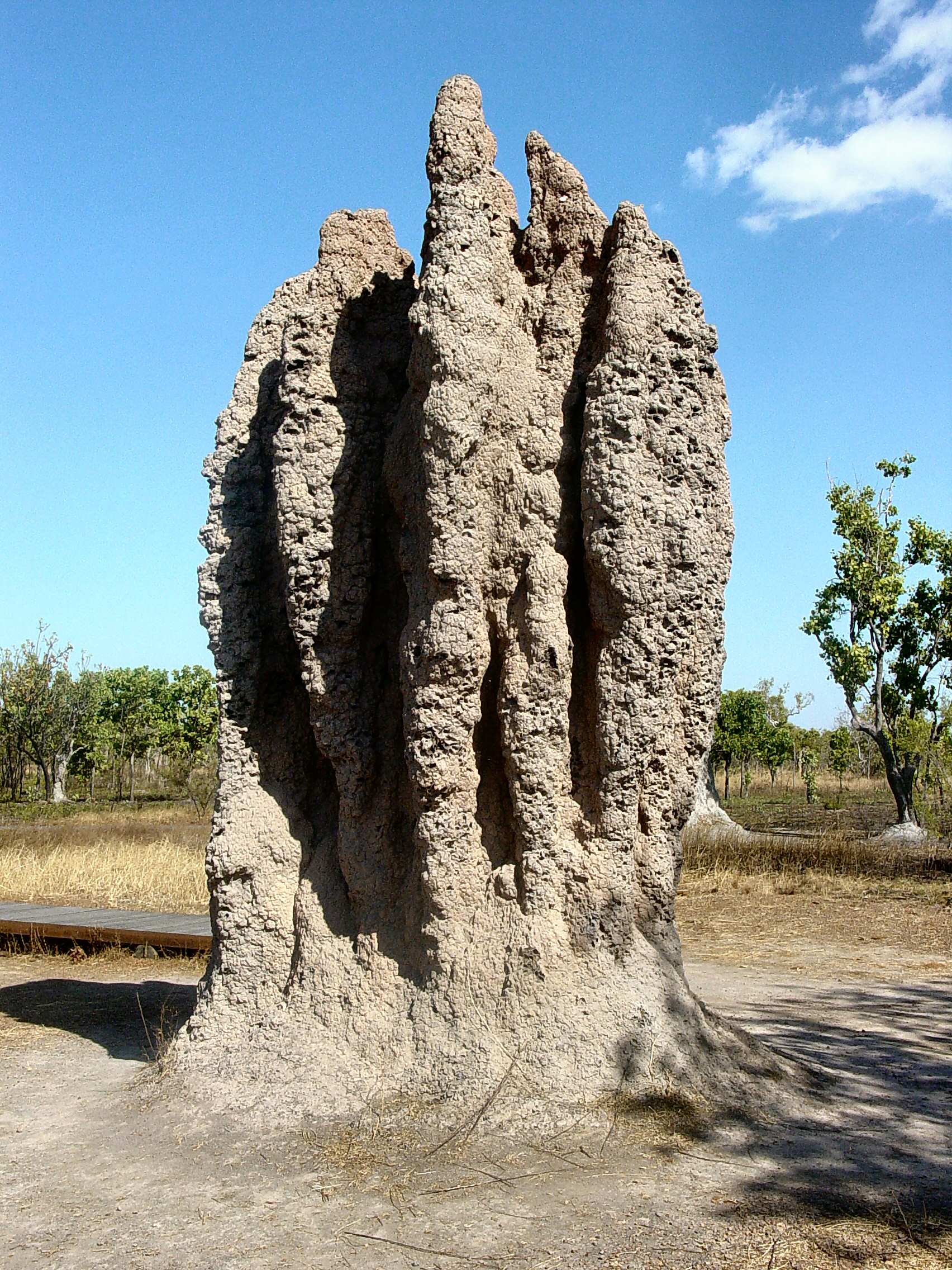
Attribution: Yewenyi at the English language Wikipedia https://en.wikipedia.org/wiki/User:Yewenyi
Emergence
“A property of a collection of simple sub-units that comes about through the interactions of the subunits and is not a property of any single subunit”
- Gary Flake
“The way that complex systems and patterns arise out of a multiplicity of relatively simple interactions”
- Wikipedia
“The whole is greater than the sum of its parts”
- Aristotle
Background: Complex Systems
Emergence
Video (NOVA scienceNOW)
http://www.youtube.com/watch?v=aEaZHWXmbRw (up to 4:50)
When watching the video, think about:
1. If there is no leader, how are flocks etc. controlled?
2. List some of the organisms that demonstrate emergent behaviour.
3. Can you think of any other examples of emergent phenomena?
Background: Complex Systems
Emergence Example
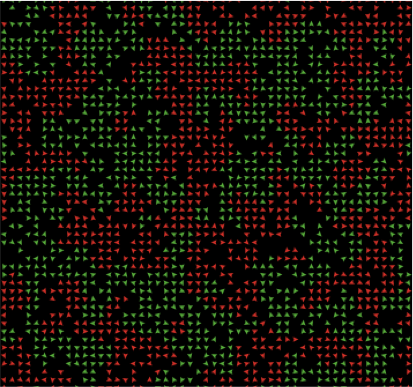
Thomas Schelling's model of racial segregation
Cells either 1 or 0 ("black" or "white").
If neighbourhood > x% of another colour, move to nearest area where this isn’t true.
Demo: What do you think will happen when these different preference levels are selected?
35%
50%
80%
Background: Complex Systems
Schelling Results
Even with low individual preferences for neighbour similarity, segregation emerges.

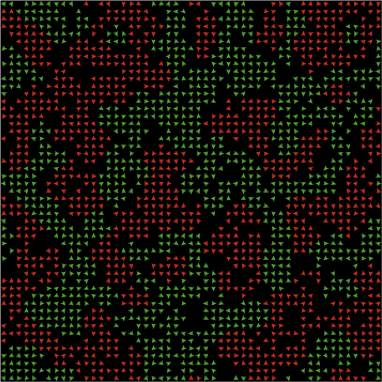
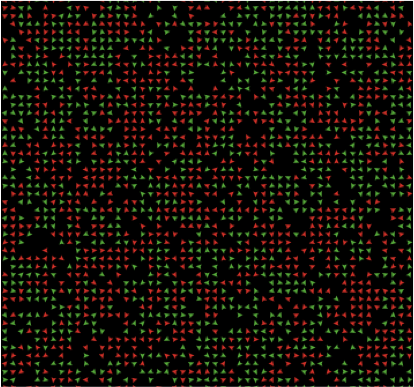
Background: Complex Systems
Emergence: Key messages
Simple rules → complex outcomes
Complex structures can emerge from simple rules
In the past, we have assumed that complex phenomena are driven by a complex mechanism
This is not always the case
Global (macro) level patterns are the result of micro interactions.
Understanding interactions is key to understanding macro behaviour.
Emergence is hard to anticipate
Cannot be deduced from solely analysis of individuals’ behaviour
Background: Complex Systems
Non-Linear Dynamics
Another fundamental characteristic of complex systems
In a linear system, the output linearly proportional to the inputs
However, complex systems to not behave in a linear fashion
A liner change in system inputs does not necessarily result in a linear change in model outputs
Background: Complex Systems
Non-Linear Dynamics Example
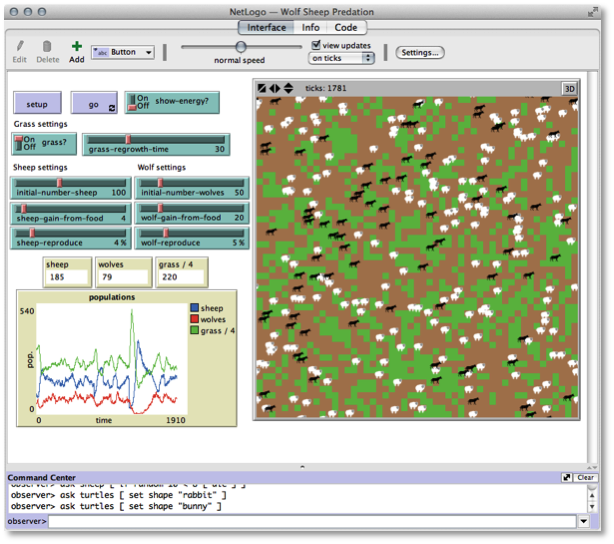
NetLogo Wolf-Sheep Predation Model
Grass grows
Sheep eat grass
Wolves eat sheep
What will happen to the sheep population when we:
Reduce the number of wolves?
Increase the number of sheep?
Reduce the speed at which grass regrows?
Interactions are key!
What does all this have to do with agent-based modelling and smart cities??
Cities are Complex Systems
Recent work recognises the complex characteristics of cities (e.g. Batty, 2005, 2012)

Characterised by:
Enumerable micro-interactions
(both human-human and human-environment)
Emergence
Phenomena that arise (unexpectedly) from behaviour of individual units
Non-linear dynamics
Difficult to predict output from inputs
Remember Braess’ paradox (Tuesday)
Feedback loops
Damping or amplifying
"The effects of an element's behaviour are fed back to in such a way that the element itself is altered." (Wikipedia)
Outline: Modelling Society
Modelling Urban Phenomena
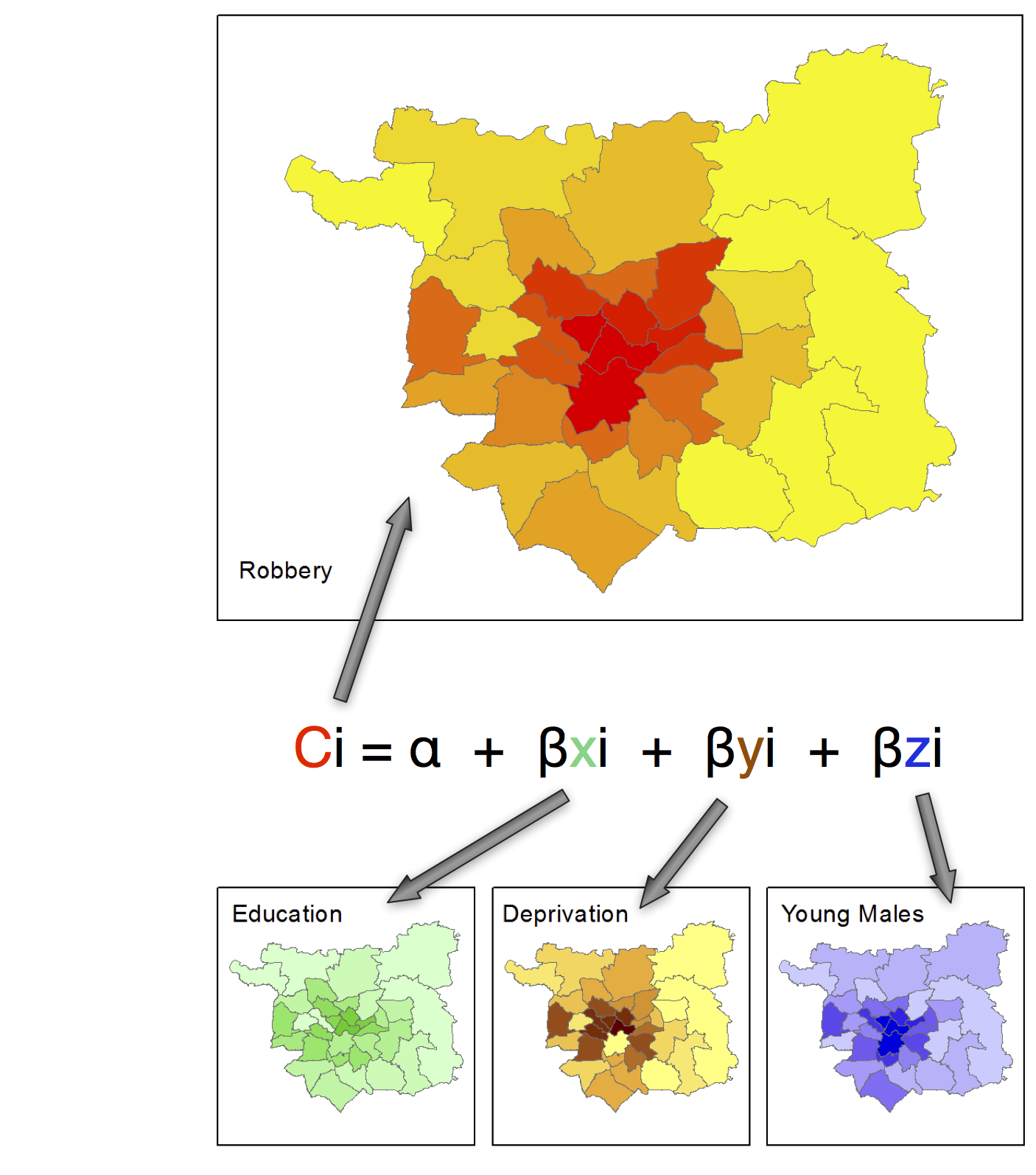
To really understand urban phenomena, or to make predictions, we need to create models
Traditional approach: aggregate models
Work at an aggregate level, from the top-down
E.g. Regression, spatial interaction modelling, location-allocation, system dynamics, etc.
Also other Computational Social Science approaches (e.g. equation-based models) (Cioffi-Revilla, 2014)
Aggregate Models
Aggregate models work very well in some situations
Homogeneous individuals
Interactions not important
Very large systems (e.g. pressure-volume gas relationship)
BUT: many systems are driven by individuals
(cars, people, ants, trees, whatever)
Aggregate models miss some important elements:
Low-level dynamics, i.e. "smoothing out" (Batty, 2005)
Interactions and emergence
Unsuitable for modelling complex systems
An Alternative: Agent-Based Modelling (ABM)
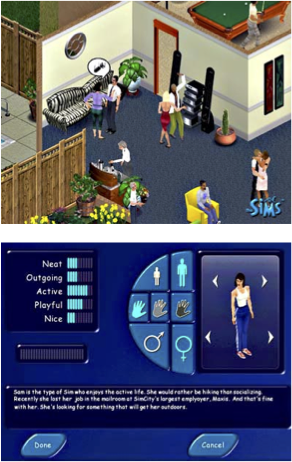
Rather than controlling from the top, try to represent the individuals
"Grow" the phenomena from the ground up (Epstein and Axtell, 1996)
'Object-based models' - variables and equations are "encapsulated" within objects (Cioffi-Revilla, 2014)
Account for system behaviour directly
Can model emergence, non-linearity, and other features of complex systems
Essential ingredient for a smart city
An Alternative: Agent-Based Modelling (ABM)

Basic execution process
t=0 (initialisation) : create a population of agents and their environment
Each agent has variables that represent their state and rules to control their behaviour
t+1 : Each agent executes its behavioural rules and updates its state
This can involve moving, interacting with, interacting with other agents, performing no action etc.
ABM Example: MASSIVE
http://www.youtube.com/watch?v=W5pNPJAhsBI
http://www.lordoftherings.net/effects/index.html
When watching the video, think about:
What do the agents represent?
What behaviours have been implemented?
How many agents can they model?
How have the agents’ brains been represented?
What is an agent?
No universal definition, but most people agree that agents should exhibit some of the following criteria
Autonomy
Act independently, free from central control
Control its own state and make independent decisions
Heterogeneity
Agents should not normally be identical
Groups of similar agents are formed from the ground-up (e.g. by agents interacting with each other)
Reactivity (and proactivity)
Agents can sense their environment and respond to changes (or respond to expected changes
Responses should be goal-directed
What is an agent?
Bounded rationality
Agents should not have full knowledge of the world (this would be very unrealistic)
Environmental perception can be limited
Choices will not be perfectly rational – they can make mistakes
Interactive
Agents can communicate with each other
Could be dependent on environment (e.g. distance)
Mobile
Often agents will be able to navigate a space.
Learning / adaption
Agents should be able to adapt future decisions, based on past experiences
The Environment
In models of human systems, agents are usually placed in some sort of geographical environment
Structure / type of the environment depends on the research question(s)
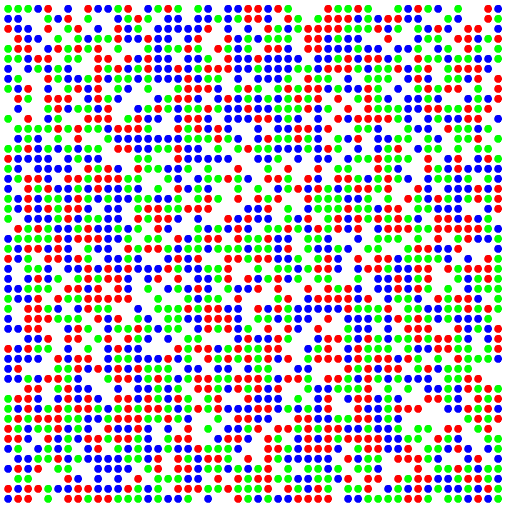
Abstract: discrete grids
Objects located at discrete (integer) coordinates
Can only move onto cells
Often conduct neighbourhood / proximity queries (e.g. which cells are next to me?)
Cells can have different shapes (squares, hexagons, triangles ... )
The Environment
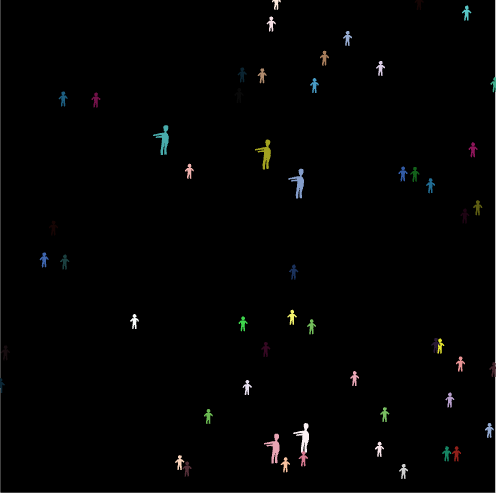
Abstract: continuous space
Objects located at arbitrary decimal coordinates
Can move to any location within the boundary of the world
Often the researcher restricts these movements to roads, paths, etc.
Conduct spatial queries
Find all objects within 10 meters
Find objects that are within a boundary
Continuous space example: asteroids!
Boundaries of the world
What happens if an agent tries to walk outside the boundary of the world?
Agents bounce back from the boundary (bouncy?)
Walls absorb agent momentum (absorbent?)
Left/right and up/down borders joined together (torus)
Choice of boundaries depends on the application area
Boundaries Quiz
Can you think of some example applications that require the different types of boundary.
Bouncy:
Absorbent:
Torus:
But what about geography?
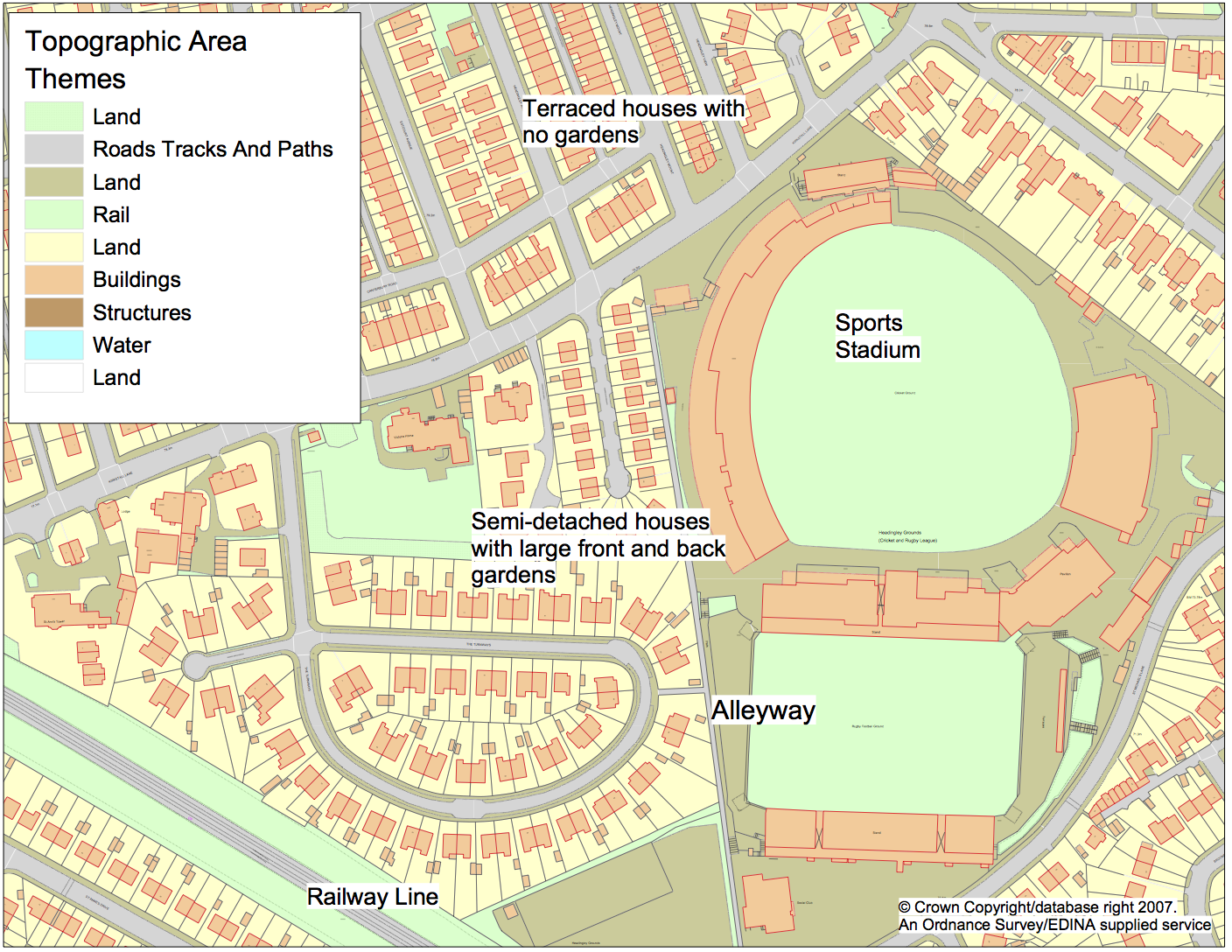
Sometimes including a realistic geographic space is important, somtimes not
Explanatory vs Predictive modelling
Abstract environments great for exploring theory (e.g. Schelling)
But in some cases the underlying geography is a fundamental part of the model and abstracting space is not appropriate
E.g. predicting positive / negative impacts of smart cities initiatives
Including geography increases complexity, need to consider its value to answering the research questions.
Remember Claudio's chair?
Challenge: integrating geogrpahical data with an ABM
Linking an ABM and GIS
Loose coupling
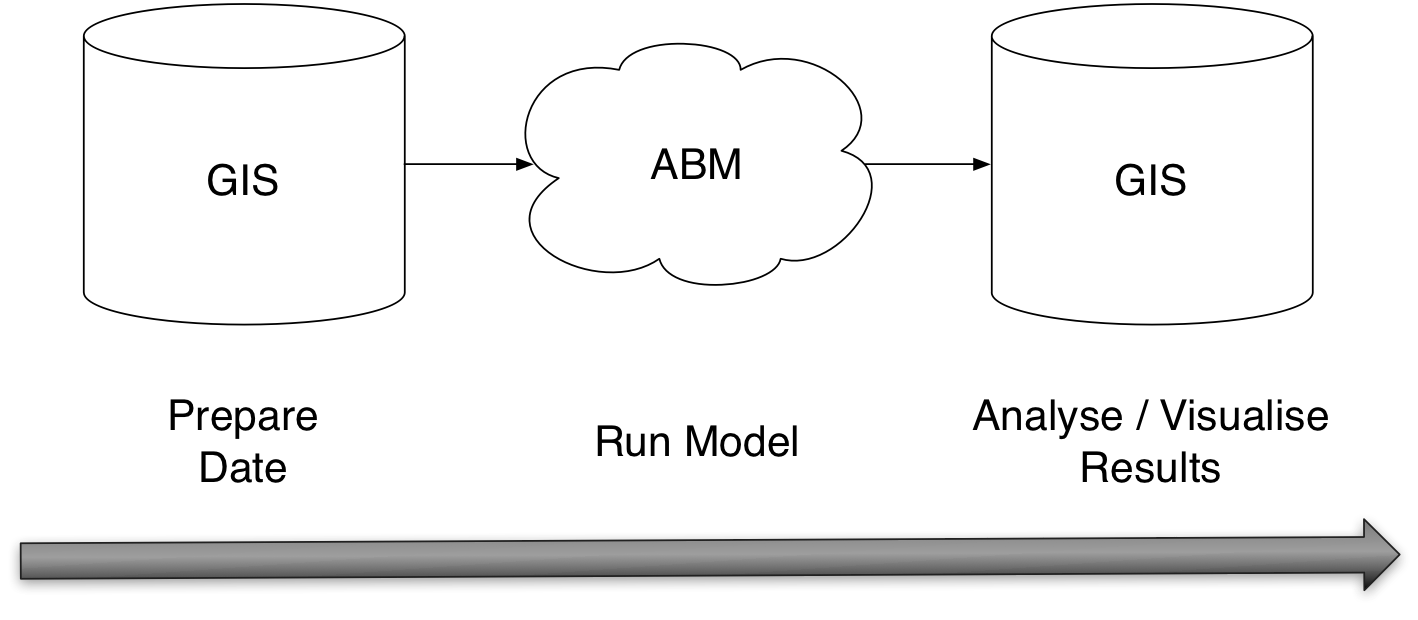
Linking an ABM and GIS
Tight coupling
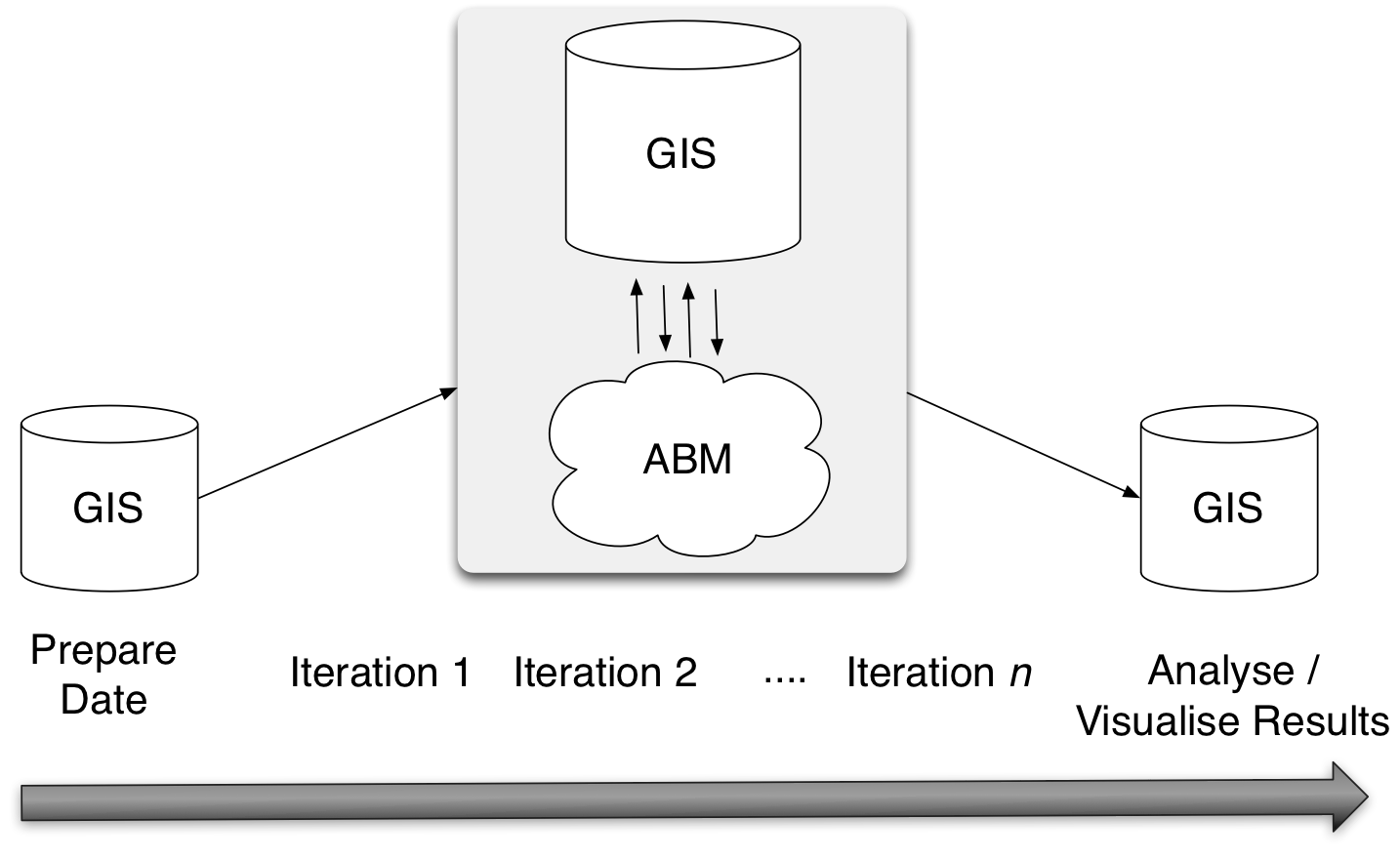
Loose vs. Tight coupling
Loose
Efficient: GIS are slow, allowing the model to run on its own will almost certainly be quicker
Flexible: The model can run on any computer system, including high-performance 'grid' systems
Free: The model is not tied to a proprietary GIS so can be released and reused freely by others. (Note: Open-source GIS systems are available, e.g. QuantumGIS and GRASS)
Tight
Convenient: Easy to see what the model is doing while it is running
Interactive: Possible to interact with the model and influence an individual model run.
Reusable: Stakeholders / users will find it easier to use if it is built into their GIS.
A-Spatial Environments
So far, we have come across grid, continuous and geographical environments.
In some models, a spatial environment is not needed.
E.g. a social network
Can still account for interactions, complexity, emergence, non-linearity, etc. etc.

Environment Quiz
You want to create a model to better understand fox hunting by simulating a hunt in progress (riders, hounds, foxes). The aim is to find out how many foxes are needed for an enjoyable killing spree, and where they should be located.
List some elements that you would want to include in a virtual environment for this model.
Would you use an abstract or a more realistic environment?
Appeal of ABM
Most 'natural' way of thinking about social systems
Individual actions drive the system
Able to model emergence
“A phenomenon is emergent when it can only be described and characterised using terms and measurements that are inappropriate or impossible to apply to the component units”
- Gilbert (2004) page 3.

Appeal of ABM
Can include physical space / social processes
Designed at abstract level: easy to change scale
Bridge between verbal theories and mathematical models
Dynamic history of system
An essential ingredient for smart cities
Disadvantages of ABM
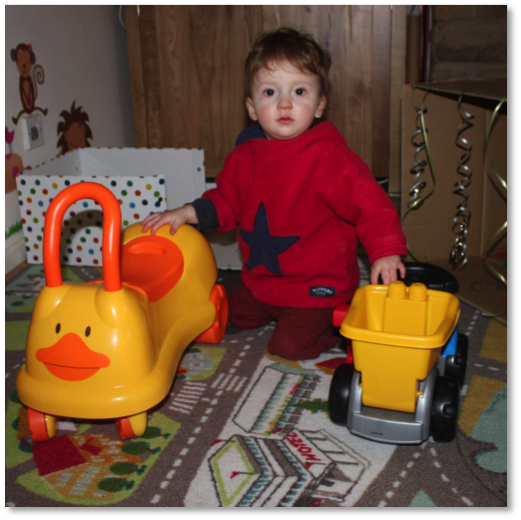
Known unknowns
We don’t know exactly what someone will do.
So we guess
E.g. there is a 30% change of little Jacob playing with his duck this morning, and a 70% chance of playing with his truck.
Models that use randomness like this are probabilistic
The need to run many times to ensure robust results
Disadvantages of ABM

Computationally expensive.
Complicated agent decisions
Lots of decisions!
Multiple model runs (robustness)
Modelling "soft" human factors
A benefit is that we can include complex psychology
But this is really hard!
Potential to over-complicate
Need to think carefully about what to include
Another disadvantage: data
Data required at every stage
Understanding the system / behaviour
Calibration and validation
But high-quality data are hard to come by
Many sources are too sparse, low spatial/temporal resolution
Censuses focus on attributes rather than behaviour and occur infrequently
Also need data from numerous scales (e.g. pattern oriented modelling; Grimm et al. 2005)
Understanding social behaviour
How to estimate leisure times / locations? Where to socialise?
Another disadvantage: data
Question
Can you suggest some sources of information that we can use to inform our agent-based models?
What are we missing? (In a perfect world, what would you also like to know?)
Outline: Modelling Society
Modelling (Human) Behaviour
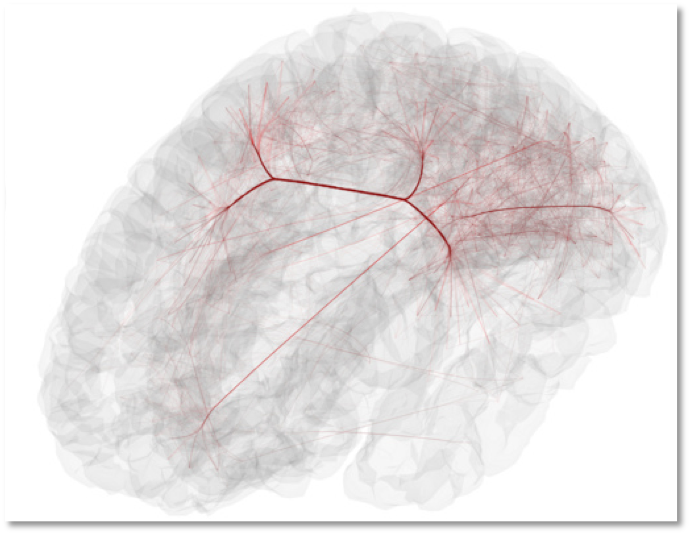
Photo attributed to Arts Electronica ( CC BY-NC-ND 2.0)
One of the main advantages to Agent-Based Modelling.
But also really difficult
Subjective choices
Complicated psychology
(Seemingly) irrational behaviour
Also difficult decisions about what to include in a model
Modelling (Human) Behaviour
Quiz
Choose a number between 1 and 4
Write the number down on a slip of paper
What percentage of people do you think chose:
1?
2?
3?
4?
Modelling (Human) Behaviour
Results
"The most common response is 'three' and there is a secondary effect of this task: people feel a need to explain why they chose whatever answer they did. The second most common answer is 'two'. Very few people decide to respond with either 'one' or 'four'. Sadly, there is not a serious study of this behaviour but undocumented sources suggest that the response statistics are close to 50% for 'three', 30% for 'two' and about 10% for the other two answers." (Kennedy, 2012)
Key message: "Humans are not random. They (we) are strange and wonderful" (Kennedy, 2012)
The previous example shows that even simple decisions can be hard to predict
Fortunately there are architectures that can help with building behavioural models.
Rule-Based Systems
(Simple) Rules
IF hunger < hungerThreshold1 THEN
agent-dies
IF hunger > hungerThreshold2 THEN
address-another-goal
IF hunger > hungerThreshold1 and hunger < hungerThreshold2 THEN
search-for-food.
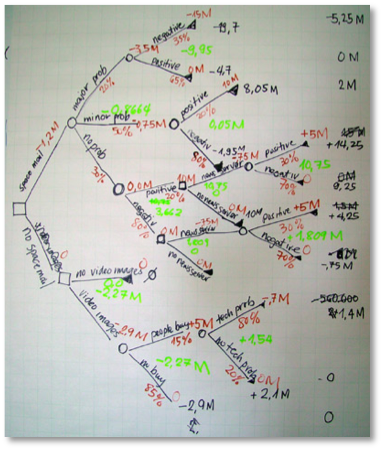
Node-based
E.g. decision trees
(Remember LOTR and MASSIVE ?)
Behaviour Based Artificial Intelligence (BBAI)
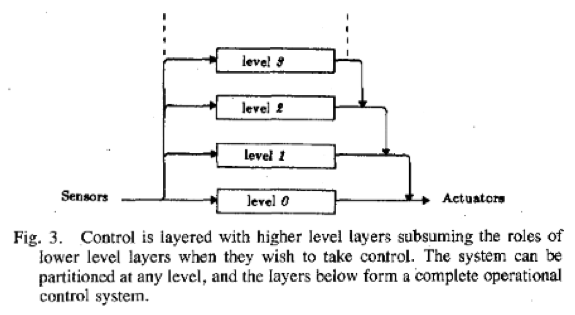
Layered behaviour
Upper layers take control when they can
Robot can default to lower-level behaviour
Behavioural modules, working concurrently compete/contribute to overall behaviour
Popular in robotics, less common in simulation.
See: Brooks, R. (1996) From Earwigs to Humans. Robotics and Autonomous Systems 20: 291--304

Beliefs, Desires, Intentions (BDI)
Beliefs:
Internal knowledge about the world
Memory of past experiences
Desires
Goals the agent is trying to achieve
Can be short and long term (e.g. 'eat food', 'raise children')
Can be contradictory
Intentions
The most important immediate goals
Can alter the rapidity with which an agent changes intentions (e.g. 'caution').

Beliefs, Desires, Intentions (BDI)
Probably the most common / popular architecture in ABM
Rational model
All action requires some deliberation
Good representation of human cognition (?). But:
Core elements hard to observe directly
Rational decisions only useful to a limited degree (e.g. pulling hand away from fire requires no rational thought)
PECS
Physical conditions, Emotional states, Cognitive capabilities and Social status (Schmidt, 2000)
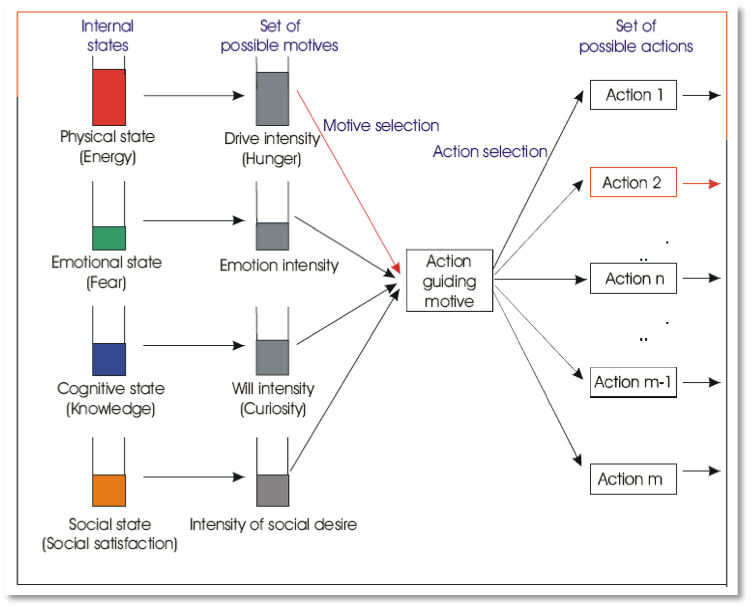
Internal states
Physical
Emotional
Cognitive
Social
Motives
Intensity functions determine motive strength
Include level of need, personal preference, environment, others..
Strongest motive becomes action guiding motive
How realistic / complicated does the behaviour need to be?
Cognitive architectures help us to structure behaviour. But don't suggest what we should include
Two broad approaches that think about behavioural complexity:
KISS
Keep It Simple, Stupid
Start with the simplest model, build complexity if necessary
KIDS
Keep It Descriptive, Stupid
Start with a model that fully describes the system, then simplify if possible.
Remember Claudio's chair?
Axelrod, R. (1997). Advancing the art of simulation in the social sciences. In Conte, R., Hegselmann, R., and Terna, P. (eds) Simulating Social Phenomena , pages 21–40. Springer-Verlag, Berlin. (Draft chapter available online)
Edmonds, B. and Moss, S. (2005). From KISS to KIDS: an 'anti-simplistic' modelling approach. In Davidsson, P., Logan, B., and Takadama, K., editors, Multi Agent Based Simulation 2004, Lecture Notes in Artificial Intelligence, pages 130–144. Springer. Available online.
How to find out which behaviour is important?
Published literature
Talking to the experts
Numerical experimentation
Rigorous data analysis
Behaviour Missing Link: Data
Advantage of modelling individuals tempered by lack of data to:
Understand behaviour
Calibrating and validate models (particularly pattern oriented modelling, e.g. Grimm et al. 2005)
High-quality data are hard to come by
Many sources are too sparse, low spatial/temporal resolution
Censuses focus on attributes rather than behaviour and occur infrequently
Big Data "Revolution" might offer a solution
Social media (Facebook, Twitter, Flikr, FourSquare, etc.)
Volunteered geographical information (VGI: Goodchild, 2007)
Commercial data (Loyalty cards, Amazon customer database, Axciom)
Movement data (Mobile phones, Oyster cards, etc.)
This is the subject of the next lecture...
Outline: Modelling Society
Agent-Based Modelling in Practice
Creating an agent-based model can be difficult
No standard software (e.g. R, SPSS, etc.)
Some programming usually required
Steep learning curve
Fortunately, numerous tools and libraries exist to help

Computer code ('libraries')

Researchers write software to perform useful functions:
Draw graphs
Visualise the model
Manage the schedule
Great for programmers
Less time spend worrying about admin, more time on modelling
Examples:
Loads of others listed here
Repast Simphony

Written in Java
Models can be developed by programming (Java, CoffeeScript, ReLogo), or using the GUI
Relatively steep learning curve
Powerful and popular
C++ version designed for high-performance computer grids
Repast Simphony Example
Burglary

This model accurate geographical data for Leeds, UK
Buildings / houses
Roads
etc.
Behaviour:
PECS: drug addiction, sleep, socialise..
Able to explore the impacts that changes to the environment or changes in behaviour have on crime in a real area
MASON
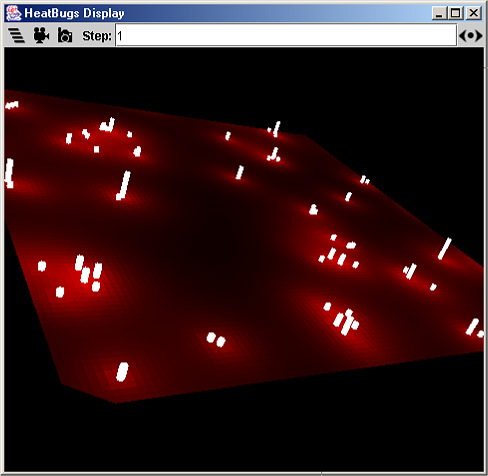
A joint effort between George Mason University's Evolutionary Computation Laboratory and the GMU Center for Social Complexity.
Simple, light-weight. Written in Java.
Coding skills needed, so steep learning curve.
But very powerful and easy extend / customise
Can run on high performance computer Grids
Crooks, A.T. and Wise, S. (2013), GIS and Agent-Based models for Humanitarian Assistance, Computers, Environment and Urban Systems, 41: 100-111. (pdf)
MASON
Example
ABM for modelling natural disasters and humanitarian assistance
Lots of 'crowd-sourced' becomming avaiable, but models are needed to predict (crowd) behaviour
Scenarios:
Reactions to distribution of aid
Rumour propogation
Emergency evacuations
For more information, see: http://www.css.gmu.edu/haiti/
Repast Simphony & MASON
Critique
Advantages
Flexible / customisable
Easy integration with other (Java) libraries
Free / Open Source
Execute on high performance grids
Disadvantages
Need to be programmed: steep learning curve
Complicated (?)
Graphical Environments
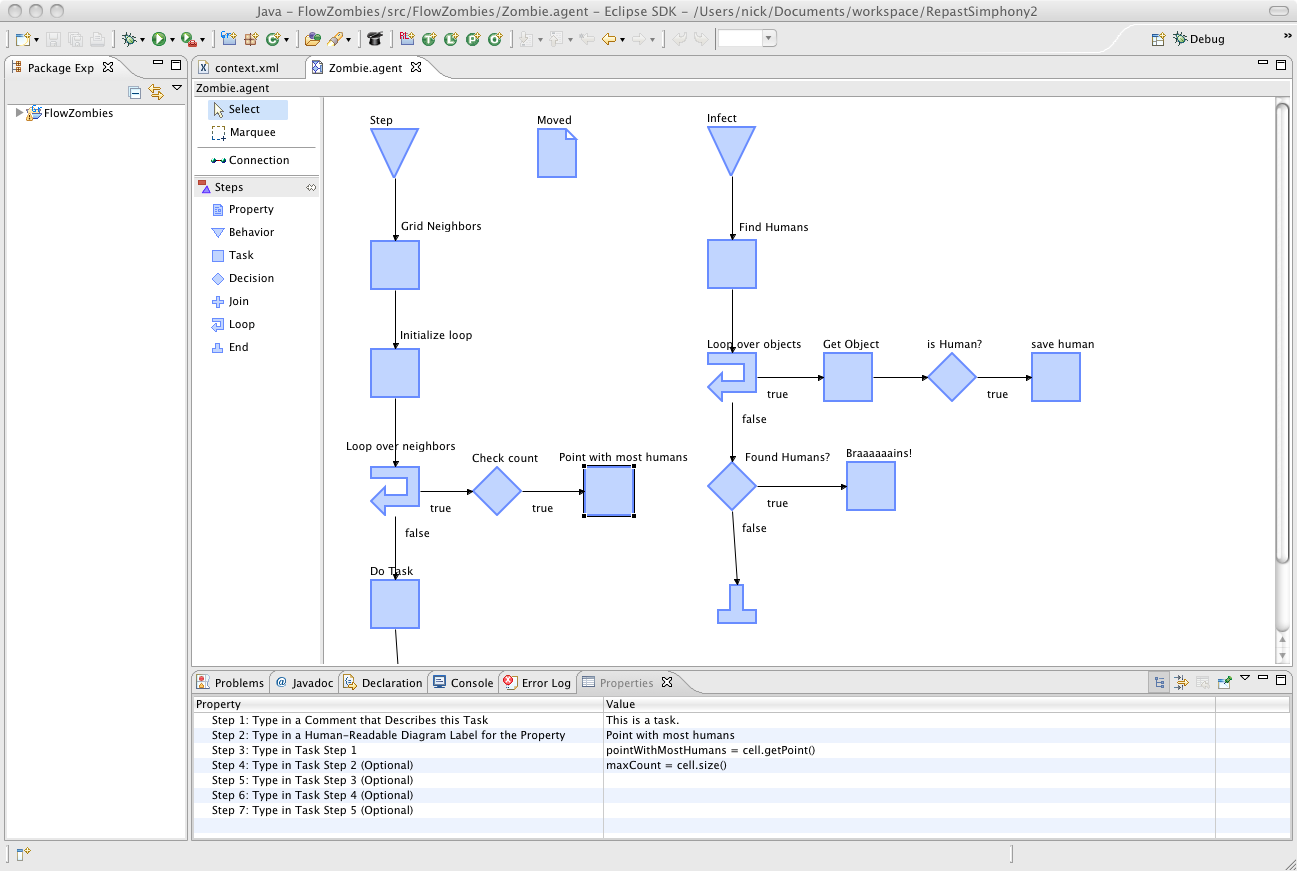
Entirely visual - no programming needed
Most useful for non-programmers
Examples
Somewhere in the middle
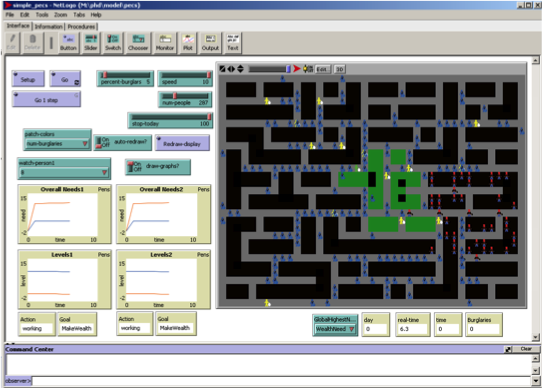
Some code writing, some visual development
More powerful than purely visual tools, but easier to use.
Save time having to learn to do simple tasks and concentrate on model behaviour
e.g. NetLogo

Base on Star Logo.
Popular teaching tool, originally Designed to be used by children
Very powerful, but also easy to learn
Easy to build models
Easy to interact with models
East to extract data and create plots
Excellent documentation: http://ccl.northwestern.edu/netlogo/docs/
NetLogo
Graphical part (Interface) with sliders, graphs, buttons and a map
Scripting part (Procedures) which contains instructions (code)
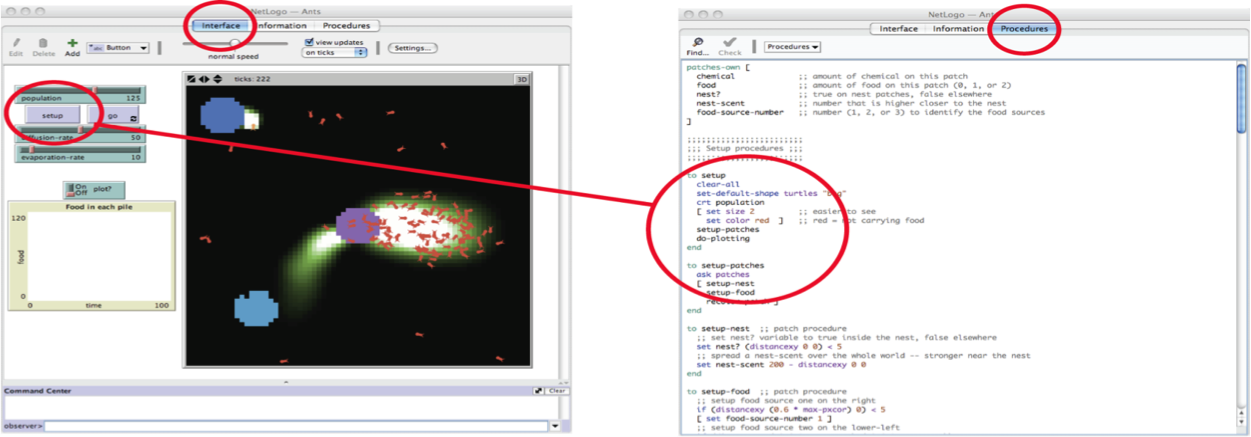
NetLogo
Example: Exploring crime theory
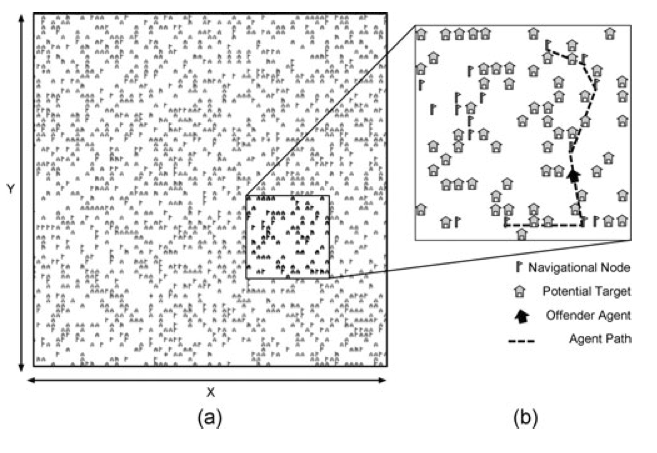
Birks et al. (2012)
Randomly generated abstract environments
Theoretical 'switches' (activate three different criminology theories)
Compare results to expected outcomes:
Spatial crime concentration
Repeat victimisation
Journey to crime curve
NetLogo
Example: Exploring crime theory
| Theory | Enabled | Disabled |
|---|---|---|
| Routine activities | Agents assigned a 'home' and routine paths | Random movements |
| Rational choice | Victim attractiveness (based on risk, reward, effort) | Homogeneous target attractiveness |
| Awareness space | Dynamic awareness - alters offender decision-making | Uniform environment awareness |
Results:
All hypotheses are supported
Rational choice theory has lower influence
Learning NetLogo
Great documentation on the NetLogo website
Or see my 6 NetLogo practicals (written for a final-year undergraduate course)
... somewhere else ...
There are loads of other packages that people are using in novel ways. E.g.
Second Life (see http://www.casa.ucl.ac.uk/abm/secondlife/
Conclusion / Final Thoughts
Cities are complex systems
ABM can capture many 'complex' properties
This makes them essential for understanding urban dynamics and designing 'smart' cities
Frameworks exist to organise behaviour in computer models
BUT: data to understand individual behaviour are hard to come by
Data sparcity for predictive modelling
The 'Big Data Revolution' might help...
Reading and Other Resources (I)
Papers - all offer excellent introductions to agent-based modelling
Macal, C. M., and North, M. J. (2010). Tutorial on agent-based modelling and simulation. Journal of Simulation, 4(3), 151-162. doi: 10.1057/jos.2010.3.
Bonabeau, E. (2002). Agent-based modeling: Methods and techniques for simulating human systems. Proceedings of the National Academy of Sciences, 99(90003), 7280-7287. doi: 10.1073/pnas.082080899.
O'Sullivan & Haklay (2000), Agent-based models and individualism: is the world agent-based?, Environment and Planning A (32), 1409-25
Castle, C. J. E. and Crooks, A. T. (2006). Principles and concepts of agent-based modelling for developing geospatial simulations. UCL Working Papers Series, Paper 110, Centre For Advanced Spatial Analysis, University College London. Available online.
Reading and Other Resources (II)
There is also a long list of papers here:
http://mass.leeds.ac.uk/2013/02/13/an-excellent-abm-paper/.
Textbooks
Batty, M., 2013. The New Science of Cities. MIT Press.
Heppenstall, A.J., Crooks, A.T., See, L.M., Batty, M. (2012) Agent-Based Models of Geographical Systems. Springer.
Cioffi-Revilla, C., 2014. Introduction to Computational Social Science, Texts in Computer Science. Springer, London. (Esp. chapter 10)
Prof. Bruce Edmonds is one of the big names in agent-based modelling. He has two videos that provide excellent introductions to the methodology
A short one: http://www.youtube.com/watch?v=JANTkSa4hmA
A longer version from a conference presentation: http://www.youtube.com/watch?v=9nEPxb2J73w
References
Axelrod, R. (1997). Advancing the art of simulation in the social sciences. In Conte, R., Hegselmann, R., and Terna, P. (eds) Simulating Social Phenomena , pages 21–40. Springer-Verlag, Berlin. (Draft chapter available online)
Batty, M. (2005). Agents, cells, and cities: new representational models for simulating multiscale urban dynamics. Environment and Planning A, vol. 37, pp. 1373-1394, 2005.
Batty, M., Axhausen, K.W., Giannotti, F., Pozdnoukhov, A., Bazzani, A., Wachowicz, M., Ouzounis, G., Portugali, Y., 2012. Smart cities of the future. The European Physical Journal Special Topics 214, 481–518. doi:10.1140/epjst/e2012-01703-3
Birks, Daniel, Michael Townsley, and Anna Stewart (2012). Generative Explanations of Crime: Using Simulation to Test Criminological Theory. Criminology 50(1) 221-254.
Cioffi-Revilla, C., 2014. Introduction to Computational Social Science, Texts in Computer Science. Springer, London.
Crooks, A.T. and Wise, S. (2013), GIS and Agent-Based models for Humanitarian Assistance, Computers, Environment and Urban Systems, 41: 100-111. (pdf)
Edmonds, B. and Moss, S. (2005). From KISS to KIDS: an 'anti-simplistic' modelling approach. In Davidsson, P., Logan, B., and Takadama, K., editors, Multi Agent Based Simulation 2004, Lecture Notes in Artificial Intelligence, pages 130–144. Springer. Available online.
Epstein, J., Axtell, R., 1996. Growing Artificial Societies: Social Science from the Bottom Up. Brookings Institution Press.
Gilbert, N. (2004). Agent-based social simulation: dealing with complexity. Available online [accessed - January 2007].
Groff, E. R. (2006). Exploring the Geography of Routine Activity Theory: A Spatio-temporal Test Using Street Robbery. Unpublished Dissertation, University of Maryland, College Park, MD.
Groff, E.R. (2007). "Situating" Simulation to Model Human Spatio‐Temporal Interactions: An Example Using Crime Events. Transactions in GIS 11, 507–530.
Heppenstall, A.J., Crooks, A.T., See, L.M., Batty, M. (2012) Agent-Based Models of Geographical Systems. Springer.
Kennedy, W.G., 2012. Modelling Human Behaviour in Agent-Based Models, in: Heppenstall, A.J., Crooks, A.T., See, L.M., Batty, M. (Eds.), Agent-Based Models of Geographical Systems. Springer Netherlands, pp. 167–179.
Malleson, N., Heppenstall, A., See, L., Evans, A. (2013) Using an Agent-Based Crime Simulation to Predict the Effects of Urban Regeneration on Individual Household Burglary Risk. Environment and Planning B: Planning and Design 40(3) 405–426
Schmidt, B., 2000. The Modelling of Human Behaviour. Society for Computer Simulation International, Ghent, Belgium.
